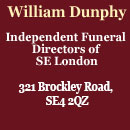
Anerley & Penge
Beckenham
Bermondsey
Bexley
Blackheath
Borough
Brixton
Brockley
Bromley
Camberwell
Catford
Charlton
Croydon
Crystal Palace
Deptford
Dulwich Village
East Dulwich
Elephant and Castle
Eltham
Forest Hill
Greenwich
Herne Hill
Kennington
Lee
Lewisham
New Cross
Old Kent Road
Peckham
Rotherhithe
Southbank
Sydenham
Walworth
West Norwood
Woolwich
![]()
New Cross was previously known as Hatcham and it
was originally in the county of Kent. The name Hatcham comes from Old
English and may have meant 'Haecci's estate'.
Roman New Cross
The Roman Dover road passed through Hatcham.
Medieval New Cross
1086 Hatcham, as New Cross was known then, is listed in the Domesday Book
as Hacheham. It is described as a manor containing land for
three ploughs, nine villagers and two smallholders, six acres of
meadowland and woodland for 3 pigs.
1319 Refence to Hachham
Stuart New Cross
1614 Haberdashers Company (founded in 1371 as a City Livery
Company purchased Hatcham Manor for £7,180.
1619 Map produced of Hatcham.
1630 Hatcham leased to Randolph Crew(baptised 1559-1646), Judge and Speaker of the House of Commons

1651 Manor described as including a manor house, orchard,
dove house, stables, brick barn, winter pasture and other lands.
1660 Hatcham leased to Thomas Pepys, brother of Samuel.
1675 Samuel Pepys referred to New Cross Inn (previously Gold Cross Inn)
Georgian New Cross
1718 New Cross tollgate established on Clifton Rise by New Cross Turnpike Trust
(became known as New Cross Gate, New Cross after an inn and Gate after toll gate)
1775 Hatcham House rebuilt (on site of old manor house).

1778 Joseph Hardcastle leased Hatcham Park House until 1819. He was a famous abolitionist. House was situated between Monson Road and Hatcham Park Road.
1795 The Telegraph Hill semaphore station

1801 Hatcham had a population of 734.
1809 Croydon Canal built through New Cross

1819 New Cross Tollgate moved to the junction of what is now the Queen's Road and New Cross Road

1823 The Telegraph Hill semaphore station removed
1831 Hatcham had a population of 1,565.
Early Victorian New Cross
1839 New Cross station opened (named New Cross Gate in 1923) on London & Croydon.
1840s Robert Browning lived near New Cross Road at Telegraph Cottage.
1843 Royal Naval School opened by Prince Albert (on site of present day Goldsmiths).

1849 Second New Cross railway station opened off Amersham Way. It called New Cross as well.
1854 St James Church built.
1859 Haberdasher Aske's surveyor William Snooke wrote a report
recommending the laying out of wide tree-lined roads for the
construction of 'dwelling houses of a high standard.'
Mid Victorian New Cross
1865 Hatcham had a population of 17,168.
1865 Toll gate removed.
1869 Hatcham Park House demolished. Egmont & Casella Roads built.
1870s Haberdashers' Company laid out Hatcham Manor Estate (including
Erlanger, Jerningham, Pepys and Waller Rds).
1875 Haberdashers Askes School for Boys & Girls opened on Pepys Road.
Late Victorian New Cross
1889 Royal Naval School moved to Chislehurst.
1891 Goldsmiths' Company's Technical & Recreative Institute opened.
Haberdasher Askes School for Girls opened on Jerningham Road.
1893 Church of St Catherine opened on Pepys Road.
1894 New Cross Fire Station built.
1895 Telegraph Hill Park opened.

Goldsmith's Tavern built on site of New Cross House pub (gave name to
area).
1897 Broadway Theatre opened by Sprague at 506 New Cross Road (later Broadway Cinema)

1899 New Cross Empire by (Frank Matcham) opened at 483-489 New Cross Road

Edwardian New Cross
1900 Hatcham Manor Estate development finished. It covered over 200 acres around Telegraph Hill supplying large houses for the middle classes.
1903 Statue of Robert Aske (died 1689) moved to grounds of Haberdasher Askes Boys.
1905 Goldsmiths' College became part of London University.
1909 Electric Cinema opened at 182 New Cross Road (closed in 1917)
Pre-War New Cross
1925 New Cross Super Kinema opened on New Cross Road and corner of Clifton Rise. Later named Gaumont.

WW2 & New Cross
1944-5 New Cross suffered heavy casualties from Flying Bomb attacks.
On 25th November 168 people were killed when Woolworths. 277-281 (?) New Cross Road was hit by a V2.
Post-War New Cross
1952 London's last trams ran in the early hours of 6 July to New Cross Depot
1958 New Cross Empire demolished.Then a petrol station & later a car wash
Actor and director Gary Oldman born in New Cross
1960 Gaumont closed (became Venue nightclub in 1990s.
1963 Century Cinema (old Broadway Theatre) demolished (last film shown in 1960)
1976 Haberdasher Aske¹s went comprehensive.
Booklist
Hatcham & Telegraph Hill- An Historical Sketch - Raymond Thatcher (Lewisham Historical Society 1982)
Goldsmith's College, A centenary Account - AE Firth (1991)
History of the Haberdashers Company - Ian W Archer (Phillimore 1991)
Discover Deptford & Lewisham - Daniel Spurgeon (1997)



